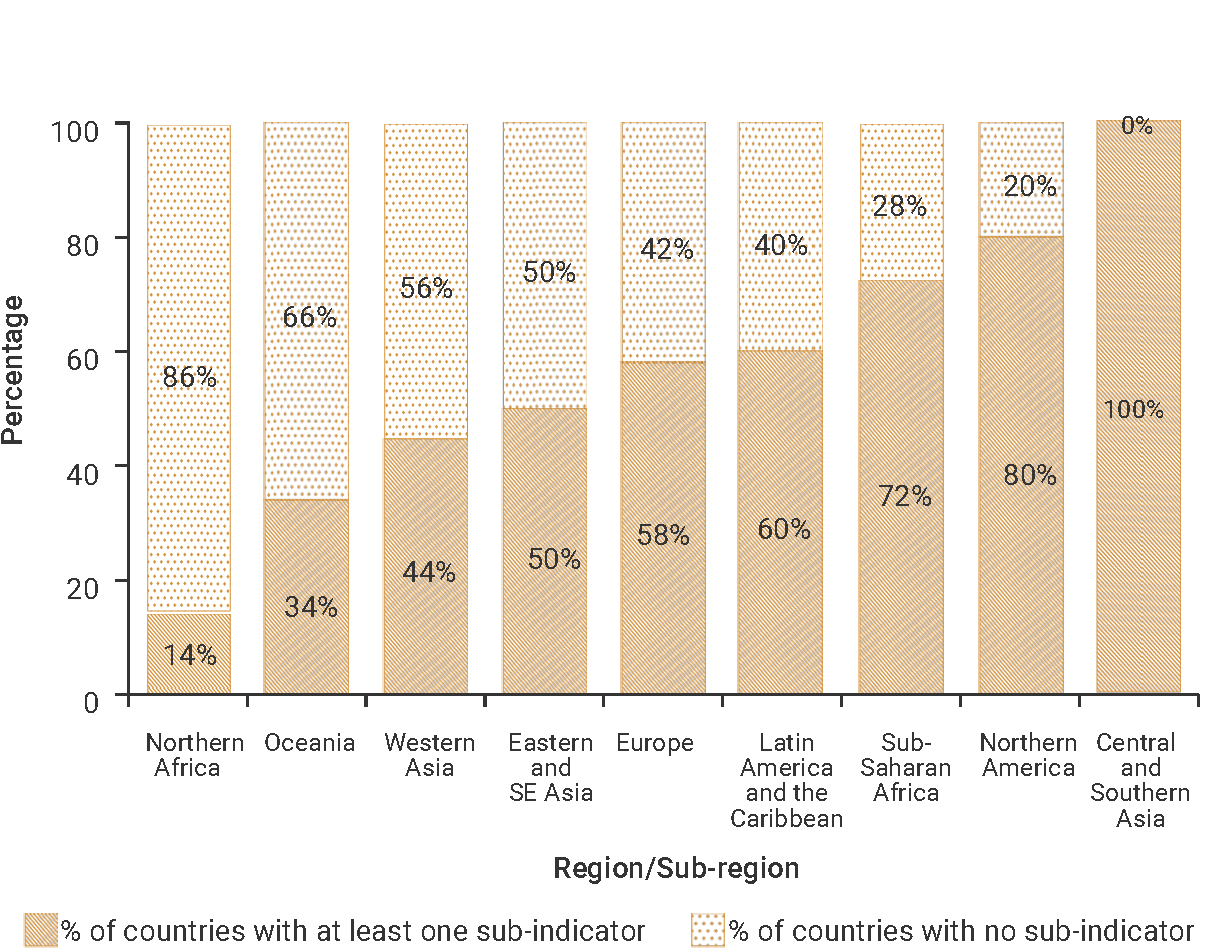SDG Indicator 14.7.1: Sustainable fisheries as a proportion of GDP in small island developing States, least developed countries and all countries
1. Key features and metadata
Definition: This indicator expresses the value added of sustainable marine capture fisheries as a proportion of Gross Domestic Product (GDP).
| Sub-indicator | Disaggregated by |
|---|---|
|
EN_SCP_FSHGDP Sustainable fisheries as a proportion of GDP (%) |
No current data disaggregation available. |
Sources of information: Data from national governmental agencies reporting to the Food and Agriculture Organization of the United Nations (FAO), United Nations Statistics Division (UNSD) and the Organization for Economic Cooperation and Development (OECD).
Related SDG Indicators: 14.4.1 (Proportion of fish stocks within biologically sustainable levels).
2. Data availability by region, SDG Global Database, as of 02 July 2025

3. Proposed disaggregation, links to policymaking and its impact
| Proposed disaggregation | Link to policymaking | Impact |
|---|---|---|
|
Sustainable fisheries by types of marine activities (%)(UN 2008a):
Applies to:
|
The disaggregation of the added value generated by sustainable fisheries by types of marine fishery activities highlights their distribution across the various economic interventions. It gives useful indications on the most developed activities, their evolution over time, and the potential or the barriers to their further development. It also provides the basic information needed by decision-makers to re-allocate, if applicable, funding, investment and capacity towards firmly anchored or emerging activities, depending on the national context and government priorities(FAO 2022a). The disaggregation should be computed in accordance with the International Standard Industrial Classification of Economic Activities (Class 0311 of the ISIC nomenclature)(UN 2008a). |
This disaggregation gives useful information for gauging optimum levels of fishing and securing long-term sustainable access to marine resources. Overexploitation of fish stocks not only generates adverse impacts for marine ecosystems and population well-being, especially in the most vulnerable communities of developing countries and SIDS. It also affects long-term fishery catchesand leads to sub-optimal economic returns(FAO 2023d). Therefore,supporting fishing activities within biologically sustainable limits means that fish stocks are better monitored and managed by countries, and Illegal, Unreported and Unregulated (IUU) fishing is better controlled. |

